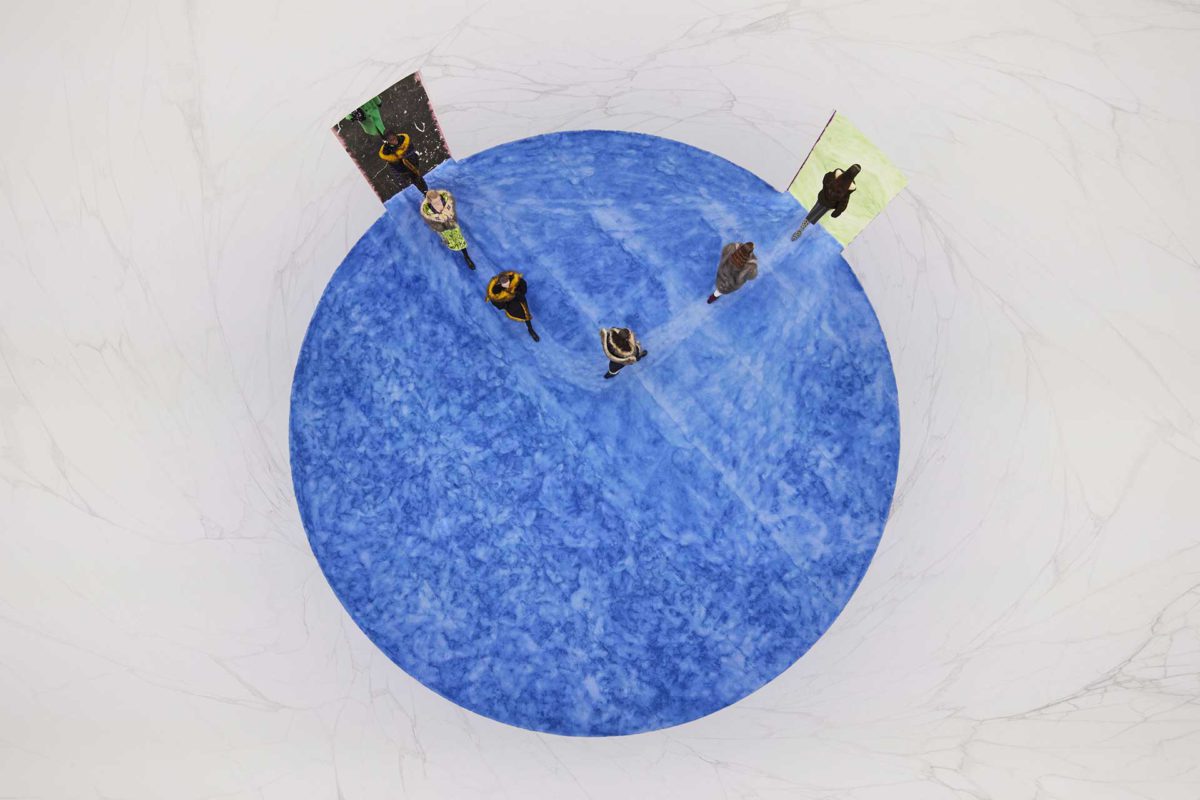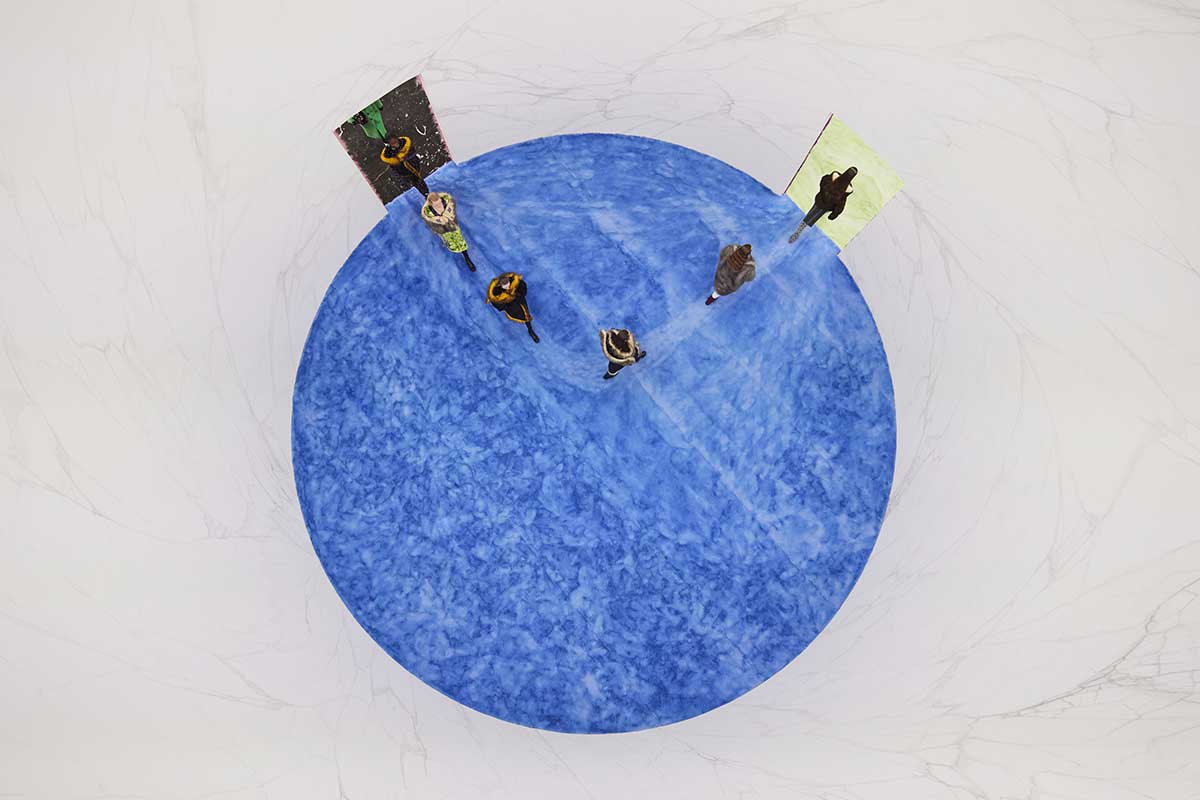The idea of the infinite and limited: co-creative directors Miuccia Prada and Raf Simons and the quest for a space in which conventional polar opposite coexists
Prada’s DNA
Coincindentia oppositorum is the notion Swiss psychiatrist Carl Gustav Jung employed in the first half of the twentieth century to define the non-rational union of opposites. Miuccia Prada and Raf Simons set out to create a transmutation of antinomies: simplicity and complexity, limitation and release, reflecting Prada’s DNA as well as today’s challenges in creativity. Focusing on changes, transformations and open possibilities, the digital presentations merged disparate themes and intents, a fusion that mirrored the nature of humanity.
The artistic duo’s latest collection moved from the belief that men and women each hold the masculine and feminine within themselves. This connection of identities is attested from earliest history and across world cultures. In Plato’s Symposium people used to be spherical creatures whose bodies were attached back-to-back. These sphere people tried to take over the gods and failed, so Zeus decided to cut them in half, leaving Apollo to repair the resulting cut surfaces.
Over the centuries, the studies on dichotomies have developed metaphors, which today the Italian house recast in a more technical vocabulary. From Greco-Roman mythology when the material world was said to be composed of an infinite, to Vivandières, who wore certain uniforms with a dress over trousers: reverse principles have been aligned. Since his debuts on the scene more than twenty-five years ago, Raf Simons has always seen Prada as a community with a specific intellect.
Possible Feelings II: Transmute
Their long-standing friendship began in 2005 when the Belgian designer was appointed artistic director of the Jil Sander house. Today, Mr. Simons owes his beginnings in women’s ready-to-wear to Miuccia Prada. CEO of Prada Group Patrizio Bertelli characterized the pairing as: «Not just a professional, but a human relationship. They share a similar identity».
The starting point of their collaboration was a redefinition of Prada’s essence: «Not the uniform as we perceive it, but clothing interpreted as a metaphor, a representation of identity, of shared values» says Raf Simons. Possible Feelings II: Transmute is the name conceived for the collection, as it followed the duo’s debut menswear Possible Feelings: «An interaction that will be pushed further» as the Belgian designer explains.
Miuccia Prada: Ornaments can become functional
The presentation displayed congruences with the January menswear show, which the co-creative directors stated was about the human body and its freedom, expressed through form-fitting. The freedom to transgress boundaries of convention was mirrored by the freedom of the body, its energy delineated through fitted bodysuits in stretch jacquard-knit, representations of a second-skin. Evening gowns in the form of utilitarian jumpsuits and tailored coats in bright colors: «Ornaments can become functional and the pragmatic can become decorative» says Miuccia Prada.
Among the garments, materiality is what permitted contradiction: the rectangular double-side wraps – paillettes on one side, faux fur on the other – that models clutched to their breast. Black paillette dress which itself was layered over the second-skin jacquard knits along with printed pieces that added color and contrast to the modern tailoring styled atop. The architecture of the rectilinear wraps morphs and creates various forms of outwear.
Executed in jacquard, sequins and re-nylon, wraps were retained in a closing and symbolic gesture of protection. During the Eighties, Prada displayed a collection of functional nylon handbags. A decade later the Italian House introduced nylon to its men’s and women’s ready to wear collections, remaining one of the codes of the label, which is one of the recurring themes in Raf Simons and Miuccia Prada’s Fall Winter 2021 collections.
Flavio Albanese Prada Operation
The name given to the presentations declared the primary meaning the designers wanted to convey through the exhibitions – a narrative on the human body and its freedom, about the need for contact as well as tactile sensations. Physical freedom reflected an ideology: «Ease and movement were crucial for us» says Simons; the emphasis on the body served to highlight action and activity, underscored by garments with inherent ease.
Italian designer Flavio Albanese defined Prada’s ongoing research as Prada Operation – a history of worlds in appearance far from the logic of costumes, while being integrated in it. An examination on polar opposites, a permanent mobility in what jurist and political theorist Carl Schmitt recalled as a flow devoid of a fixed center, the balancing of dichotomies reflecting the idea of progress. Since his recent appointment as co-creative director of Prada, Raf Simons merged this idea of progress with art, focusing on subcultural youth. The designer, who has progressed menswear, introduced artists, musicians and interior designers to an entire generation, aimed to connect with cultural opposition in today’s society.
Prada’s philosophical tensions
Simons studied industrial and furniture design and sold furniture long before even thinking about creating garments. His cross-pollination between art and creativity in his menswear enhanced the alchemy among these two disciplines that has existed for decades.
From 1937 when women’s couturier Elsa Schiaparelli partnered with Salvador Dalí to create the ivory silk lobster dress based on one of the painter’s artworks, to Yves Saint Laurent’s 1965 adaptations of Piet Mondrian’s painting and Gianni Versace’s 1991 Pop Art collection – creative partnerships lie at the root of opposite connections in the creative approach to clothing.
The era we live in is an epoch with various possibilities, permitting a different approach to establish methodologies on the questioning of creative connections, mirrored in the quest for freedom. The artistic duo’s analysis on the philosophical tensions in their latest collections is evoked through juxtapositions of surfaces, reflected by the multi-textural environment that enveloped the models.
They moved between interconnecting galleries, walled floor-to – ceiling with purple faux fur, along with marble by Rem Koolhaas and AMO, against the techno soundscape created by Richie Hawtin aka Plastikman. These contrasting backdrops are visual representations challenging the disparities between purpose and intention.
Digital shows and upcycling
The materials utilized in the set of the Fall/Winter 2021 digital shows will be up-cycled and will be given another life through special product installations and pop-ups around the world. These materials will be donated to Meta, a circular economy project based in Milan, which offers sustainable solutions to waste disposal within ephemeral events by collecting and recovering materials for selling and rentals. Meta works in collaboration with La Réserve des arts, an association which offers a service of recovery of raw materials and decoration waste from the shows, making them available to professionals and students in the cultural sector.
Following their debut collection, Miuccia Prada and Raf Simons re-examined the brand’s heritage as they step away from gendered garments, with bold prints and tailored suits, which underwent a shift between their essential language – the expression of an unconstrained body. «I am naturally attracted to the opposite and changes», says Mrs Prada, «probably it is a reflection of society in general».
Since 1996 when the Spring collection celebrated the things that the industry once considered ugly, from upholstery prints to acid colors, to square-toed, T- strap shoes, Prada’s evolution was a willingness to experiment with antithesis. «The only constant in life is change» repeats the ancient Greek philosopher Heraclitus.
Nicola of Cusa, De Docta Ignorantia (1440), Coincidentia oppositorum
History unveils how transitions originate in the unity of opposites that are interconnected but not identical as the breaking point of conventions, revealing the interconnectedness of contrary states in life and in the world. While the distinct values and ethos of the Prada brand remain unchanged, the creative dialogue with Simons is a reiteration of the designers’ philosophy; histories of reinvention and exploration – now brought together in what German polymath Nicola of Cusa’s defined in his essay, De Docta Ignorantia (1440) Coincidentia oppositorum: the coincidence of antithetical opposites to perceive the proper level of ambiguity that is resident in the universe and that was unveiled in Prada’s reality.
An ongoing research on the dichotomies which govern the universe. Miuccia Prada and Raf Simons mirrored the nature of humanity. Starting from the coincidence of opposites in ancient philosophy, the concept is a key understanding of the designers’ Possible Feelings. A creative dialogue on boundaries and freedom.




















